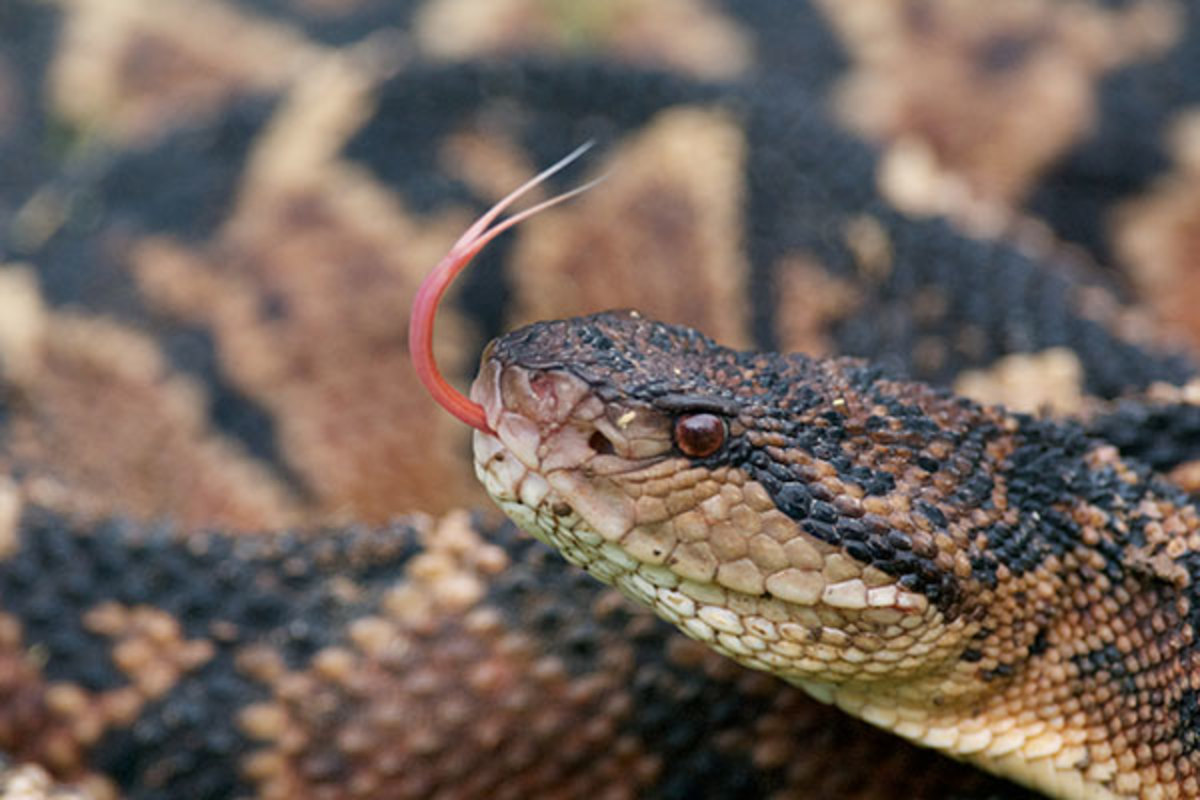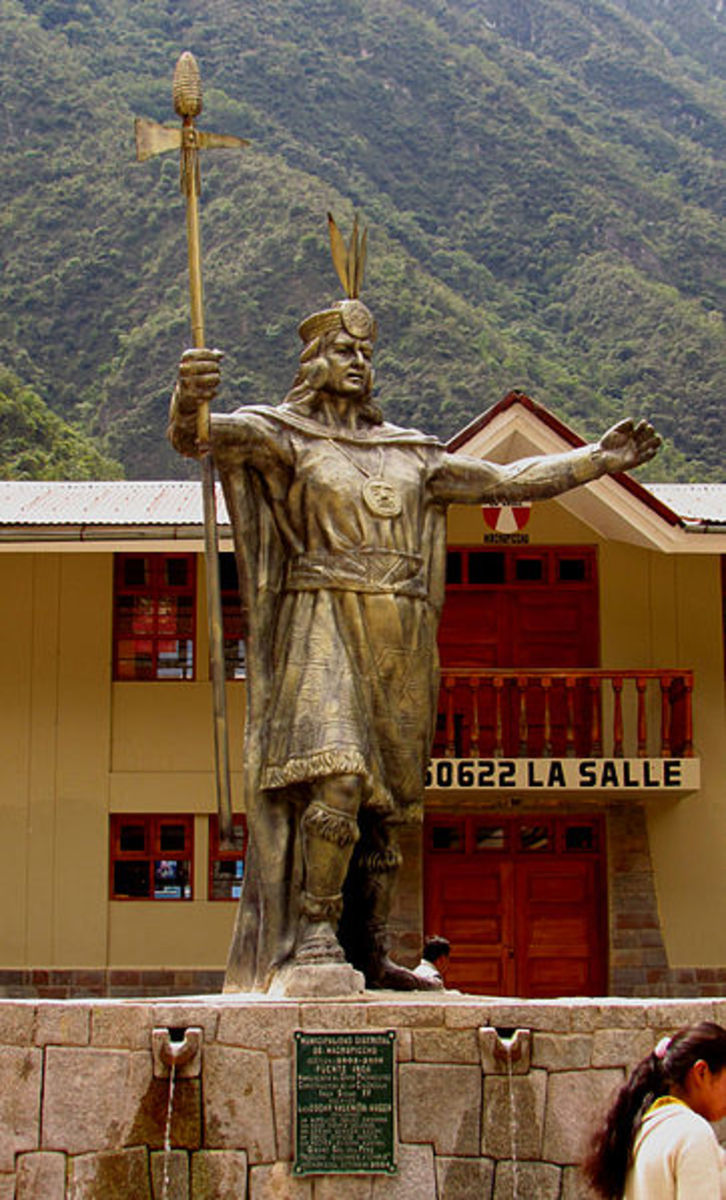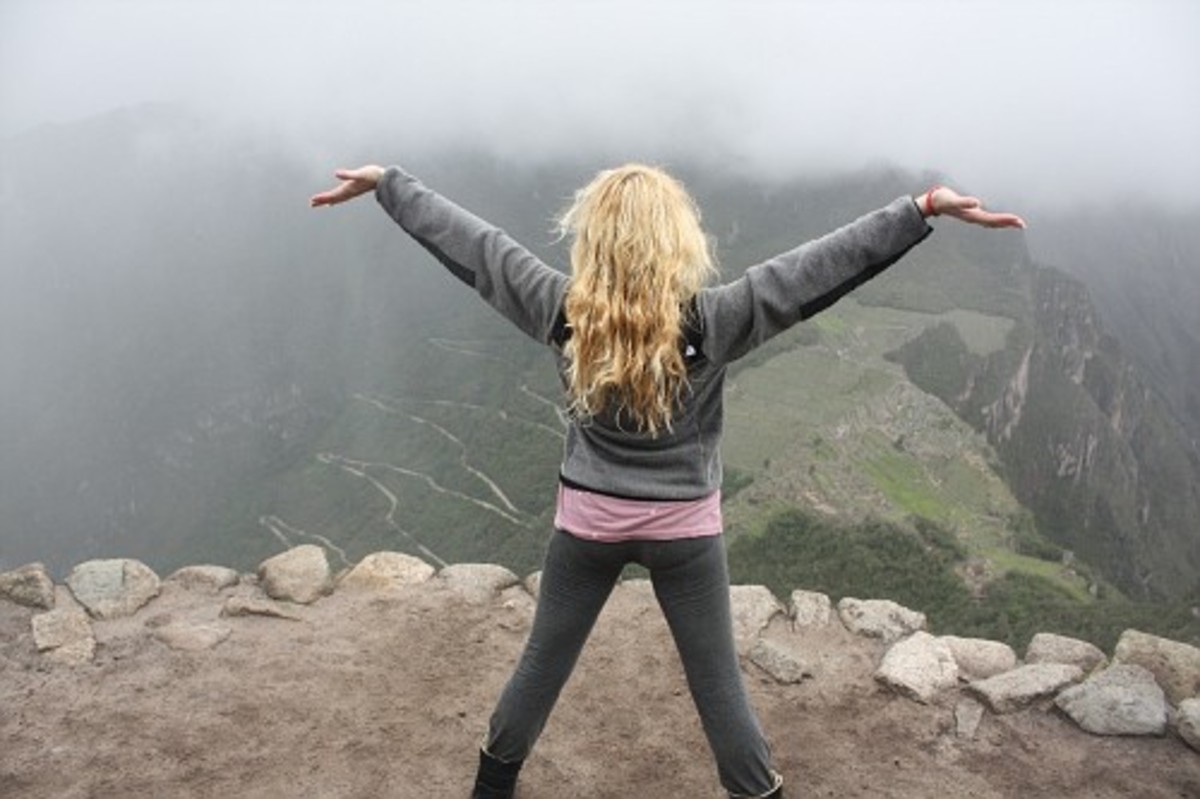Aconcagua - Climbing the highest mountain in the Western Hemisphere
Aconcagua
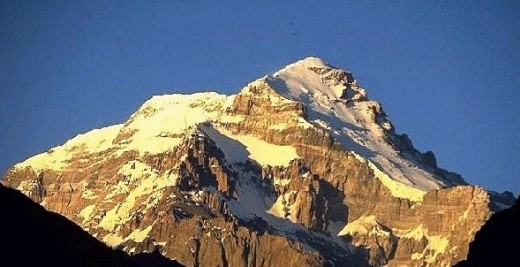
Standing 6962m above sea level, Aconcagua is the highest point outside of Asia and the second highest of the "7 Summits" after Everest.
It offers a variety of routes to the top ranging from trekking up the "Normal Route" to the significant technical undertaking that is the South Face.
Due to the 'easy' nature of the Normal Route, Aconcagua attracts many inexperienced adventurers, keen for a taste of the high altitude experience. This factor contributes to the unfortunate reality that people die on this mountain every year. The majority of these deaths are not from falls, avalanche or falling rocks. They are a direct result of the effects of altitude.
The uncomplicated terrain allows for the rapid gain of altitude and many people are not aware that just because you are physically able to climb higher, doesn't mean you should.
Anyone with limited or no high altitude experience is strongly advised to book a fully guided tour with a reputable company. The first questions you ask should be about the experience of the guides and the ratio of guides to clients. No only do more guides increase safety, they increase the flexibility of the team, giving you a better chance of making the summit.
Aconcagua Complete Guide
Tips for planning your trip
Firstly, seriously consider giving the Normal Route a miss. It is crowded and contains a particularly heartbreaking scree slope.
The Andes are a desert mountain range. It is very dry and there is little snow. This goes some way to explaining why Aconcagua is not a very attractive mountain. The Normal Route goes up the most unappealing part and all vegetation is gone by Base Camp. What you are climbing is a pile of rocks and dirt.
A much more visually interesting route is the False Polish Route via the Vacas Valley. This also opens up the possibility of a traverse, descending the Normal route as I did in 2001. It offers a close up view of the Polish Glacier, and that exciting first view of the mountain is a perfect snow capped triangle at the head of a barren valley.
TOP 5 TIPS FOR PLANNING:
- If climbing independently, allow at least 18 days. If joining an expedition, look for a long trip with multiple rest and contingency days. High winds often make summit bids impossible for days on end. I took enough food and fuel to wait at the high camp for a week (but reached the summit without a single waiting day).
- Buy dehydrated food packs before arriving in Argentina. They can be difficult to source and very expensive. Don't worry about bringing Tang style powdered drinks. Argentina is the Tang capital of the world.
- If you are climbing a technical route such as the Polish Glacier, pack carefully and bring all hardware as it can be extremely difficult to top up your kit in Argentina.
- Experienced climbers can arrange logistical support only (mule transport for your gear) and shadow commercial expeditions for directions. Due to low average snowfalls the route is easy to follow, particularly late in the season.
- Double plastic boots are a must due to the very low temperatures. These plus down jackets and sleeping bags are available to hire in Mendoza. Again if you have it bring it because it is not cheap to hire. The planes into Mendoza often have climbers dressed in all their kit to avoid weight in their checked luggage. Consider buying everything from a discount outdoor specialist if you plan on making a habit of climbing.
Mendoza
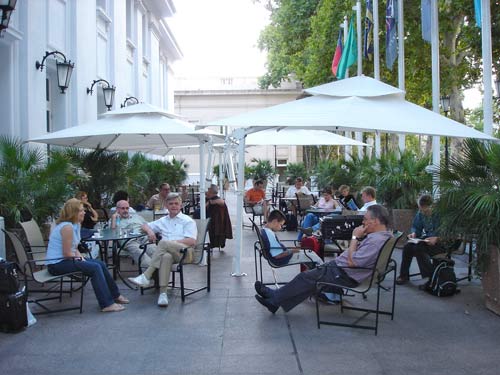
Getting There
Aconcagua is completely within Argentina. The staging town is the beautiful, laid back city of Mendoza. If time permits you are well advised to spend a few days wandering the streets, eating the food and drinking the wine. After your trip the massive steaks are also a great way to put a few kilos back on.
For those arriving in South America via Buenos Aires, there are connecting flights to Mendoza. If arriving via Santiago in Chile, you can fly or the cheap option is one of the frequent buses over the Andes (about 7 - 8 hours) with a glimpse of Aconcagua on the left if you know what you are looking for.
Navigation is easy in the old town as the city was leveled by an earthquake in 1861. When rebuilding the town the planners incorporated 5 plazas to give the locals open space to run into in the event of a repeat quake. The result, when viewed from above, is like the 5 on a set of dice. One big plaza in the middle (Plaza Independencia), with four surrounding smaller squares (Chile, San Martin, Sarmiento and Italia).
For gear hire, there are a number of outlets on Avenida General Las Heras up near the big Carre Four supermarket. Others can be found around Paseo Sarmiento, east of Plaza Independencia.
Don't forget to pick up your Park Permit for climbing Aconcagua while in town. The fee helps fund emergency services in the park and they do check them, so pay up.
Aconcagua - Getting Prepared
The Walk In
Once the mules are loaded, its time to hit the trail.
It's a 3 day walk in to base camp, regardless of which route you take. You need every second to acclimatize. I had an extra day at the trail head (around 2700m) to ease into it.
There are a couple of things to remember at this stage. Firstly, you can't get to the summit in the first week but you can lose the summit. Walking the 25 odd miles into base camp in hot temperatures makes it easy to get blisters that can have a huge impact later on when in the double plastics. I border on paranoia on the walk in, stopping every 60 - 90 minutes to check my feet + / - change socks. There is no rush as you have plenty of time to complete each days walk.
Most people walk with just a day pack and meet up with the mules at the end of the day to set camp. Although it can be extremely hot during the day, make sure you pack plenty of warm clothes. In the afternoon, when the sun falls behind the mountains, it gets extremely cold very quickly. Many a person is seen shivering, begging for the mules to arrive at camp.
Depending on who you ask, the accepted safe rate of ascent is around the 300m - 400m a day mark. This fits in nicely with the 3 day walk in plan, although via the Vacas valley route, the last day is a big one. Those without previous altitude experience will get their first altitude headaches on the way in.
The biggest bit of advice for all first timers is drink, drink, drink.
As we gain altitude, the decrease in air pressure makes less oxygen available to our bodies. To counteract this, the body compensates by increasing the respiratory rate - you breath much faster. This gets the oxygen in but gets rid of too much carbon dioxide. This in turn starts to change the ph of your blood. Your body won't allow this so your kidneys expel water to balance the ph. You will be peeing a lot. If you do not replace this you will dehydrate and this can cause many of the symptoms of altitude sickness.
Once you start climbing you should aim for 5 litres of water a day. This is easy at sea level but the higher you go, the less like drinking you will feel. You need to force yourself to drink.
Lack of thirst and lack of appetite are guaranteed but if you want the summit you need to eat and drink, drink, drink.
When you arrive at base camp get set up straight away, no matter how rubbish you feel. It doesn't snow much, but on the eastern side you often get surprised by a 15 minute snow shower.
Everyone should have a rest day planned at this stage. If you feel up to it go for a gentle hike but don't overdo it. The excellent park service has a medical clinic set up in climbing season where you can go and get checked out. Do it. It gives you something to do on your 'day off' and they give valuable advice. If your body is a little slow in acclimatizing they will ask you to come back the next day before heading up the mountain. Follow their advice, they are the experts.
Above Base Camp
The staging point for the summit depends on your route but is generally between 5900m and 6050m. With Base Camps situated around 4400m, there is a bit of climbing before the big day.
Your strategy on the mountain depends on how much gear you have. Personally, I wasn't going to come back so I was heavily laden with food and fuel to sit out a weeks worth of storms at the high camp. The bigger your contingency plan, the more gear you will be lugging up the hill.
I worked to a plan of 2 loads. I climbed high and dumped half my gear before returning to sleep at the previous altitude. The next day the rest came with me up the mountain.This enabled me to carry over half my body weight up the hill and did me no harm in acclimatizing. There were plenty of people tougher than me working to a 1 carry strategy.
Bad weather on Aconcagua generally mean wind and lots of it. You are very unlikely to have to force your way through masses of snow but persistent high winds have ruined many a summit bid. Your plan should be to get to your high camp then dig in and wait. Beware the cold, despite its reputation as being suitable for novices, frostbite happens to the unprepared every year.
The summit. A brief rest, take in the view, then back down you go.
The Big Day
If you are patient, one day you will wake up and it will be game on.
You need to start early but if you are getting up pre-dawn you run the risk of extreme cold. I made little progress until the sun came up as I had to keep stopping to warm up my feet. Some of the quickest climbers in my group were those who stay in their tents until the sun warmed things up.
Having said that it is a long day. Climbing roughly 1000 vertical metres is a big ask at altitude, and coming down afterwards seems even harder. The climb into the 6000's is pretty straight forward until the famous Canaletta.
The Canaletta has defeated many and will probably be your biggest memory of Aconcagua.It is a long spiraling gully climbing into the sky with the summit as the prize. From the start you can clearly see the top but it is difficult to judge the remaining distance. It is also impossible to predict the speed with which you will progress up the mountain.
Many will be reduced to just a handful of steps before resting. For the first time at altitude I noticed cognitive changes. I felt about 6 beers for the worse. This is where the mental battle is won or lost. One foot after another until you reach the top.
The summit itself is not much to write home about. A small, rocky plateau with a wooden cross lets you know there is no more up. If you are up to looking around, there is a great view of the south face over the edge of the Canaletta. I barely noticed and nearly forgot to take my summit photo. My mind was totally focussed on what a long way down it was.
Your day does not finish until you are wrapped up in your sleeping bag after drinking as much as you can. If you made the top, congratulations. If not, congratulations, you were sensible and made it back without becoming a statistic.
Aconcagua is not the most beautiful mountain in the world but is a significant challenge that is achievable with limited or no technical ability. It is this very fact that claims the lives of uneducated would-be climbers every year. Do your research, book with a reputable firm and closely monitor your body. Don't keep symptoms of altitude sickness a secret. This should be the adventure of a lifetime, not the end of it.
Good Luck.
View from The Summit
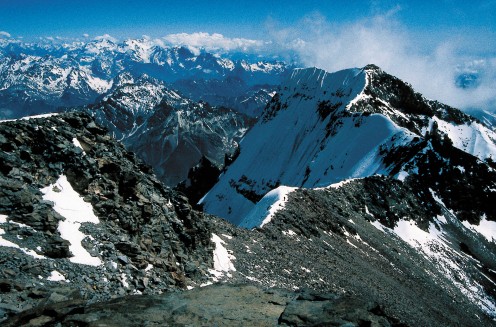
Expedition Equipment
- Buy Trekking Poles Online - Leki - Komperdell - Black Diamond
Compulsory if you are doing the 'Normal Route' due to the large amount of scree. Makes the trip back down much easier and safer as well. - Buy a Headlamp Online - Petzl, Black Diamond, Princeton Tec
Any outdoor trip that involves an overnight stay needs a reliable light source. Headlamps provide hands-free illumination centred on your field of vision. The previous problem that greatly limited their use... - The Best Backpacking Tip - Pack a Water Filtration Device
A must to ensure you summit bid is not ruined by stomach upsets. - Buy a Katadyn Water Filter Online - Water Purification for Trekking & Hiking
Katadyn are the number one selling trekking water filter worldwide
More information on Aconcagua
- SummitPost - Aconcagua -- Climbing, Hiking & Mountaineering
This helpful Aconcagua site has sample itineries of the different routes and advice on permits that must be obtained from Mendoza prior to entering the park. - Aconcagua - Wikipedia, the free encyclopedia
Wikipedia page has information on the different routes to the summit of Aconcagua and details of the first climbers to reach the top.






